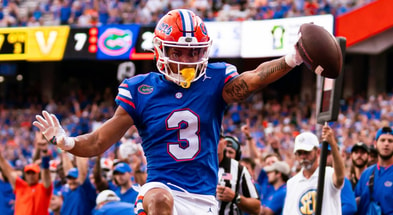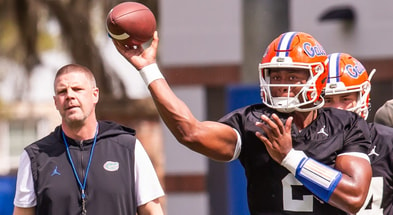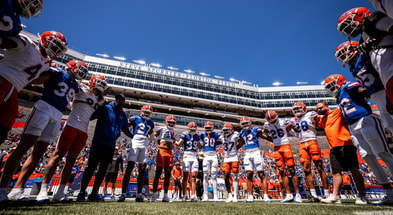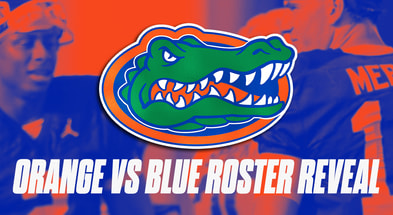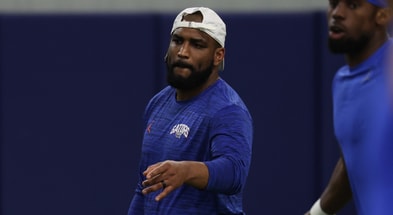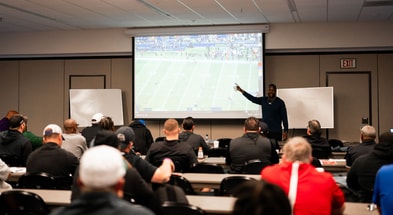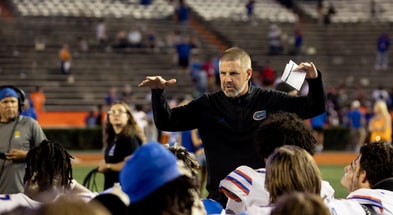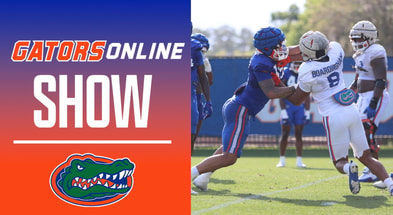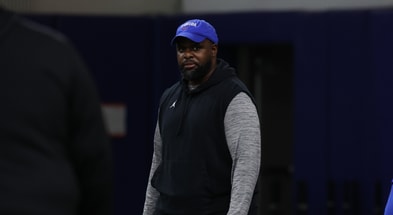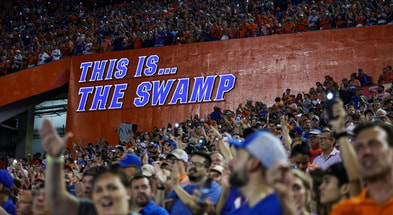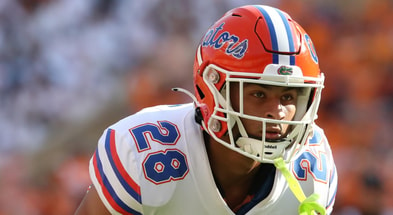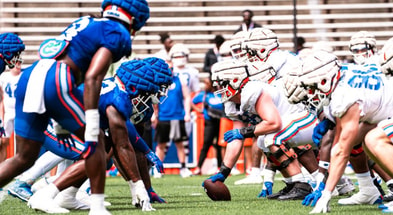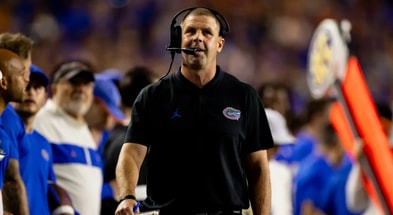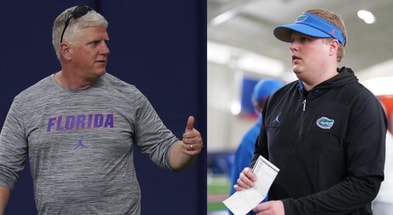Gators Co-DC Patrick Toney talks 'Creeper' defense, third-down philosophy
One name that continuously comes up throughout the football ranks is Gators’ co-defensive coordinator and safeties coach Patrick Toney. The 32-year-old helped the University of Louisiana to two Sun Belt Championships in his two seasons as defensive coordinator and pushed Ragin’ Cajuns safety Percy Butler into the fourth round of the 2022 NFL Draft.
Now, Toney is tasked with replicating his success from UL at the University of Florida, a premier program in the Southeastern Conference and college football as a whole.
Patrick Toney’s coaching background
To understand where Toney learned much of what he knows about the game, you must rewind to the beginning of his coaching career.
Toney’s first-ever college coaching position came at the Southeastern Louisiana University, under then head coach Ron Roberts, the current defensive coordinator at Baylor University. Toney was a defensive assistant, coaching in the secondary.
The two spent time from 2012-2014 together at SLU, as Toney grasped every concept he could. In 2015, the two went their separate ways, as Toney took a job at the University of San Antonio to coach safeties.
Roberts and Toney reconnected at UL in 2018, where Roberts allowed Toney to coach his safeties group once again. The two worked together for two seasons until Roberts was given the opportunity to coach at Baylor. Once Roberts left for the Bears in 2020, Toney slid into the defensive coordinator role at UL until he came over to Florida with Billy Napier.
RELATED: What will the Florida Gators’ defense look like with Patrick Toney?
Toney talks about what his ‘creeper’ defense will look like
At the core of the defense, it remains a four-man rush, but the wrinkle comes when you don’t know where the pressure is coming from.
That is called the ”creeper” position in Toney’s scheme.
“When you say that word (creeper), you really are just talking about simulated pressure,” Toney explained Tuesday. “All you’re saying is you are blitzing an unknown rusher and dropping a known rusher to replace him. It’s still a four-man rush. Just a different way to create pressure.”
Toney knows he does not want to sacrifice coverage for pressure, so he mixes up where the pressure comes from to confuse the offense.
“I think you’ve kind of seen football evolve where early on if you blitzed, it was man, and there was a lot of high-risk/high-reward to that,” Toney said. “Then it became zone blitz where you still rushed five, but were able to play with zone integrity and zone eyes.”
Toney explained that the spread offense changed defensive ideals and concepts, further complicating defensive schemes.
“Then it’s kind of come full circle with the advent of spread and really the passing game is becoming more sophisticated where you don’t always want to sacrifice coverage, right, to send another rusher, but you can create the same amount of pressure by blitzing a second-level, third-level defender to replace him with a first-level defender.”
At the end of the day, Toney wants to make the offense’s job as hard as possible simply by being unpredictable.
“You haven’t sacrificed anything in coverage, and you are just doing something to affect the protection by sending someone they may not be prepared for or asking the running back to have to block in protection rather than the five-down.”
Toney wants to bring third-down defense back to UF
Throughout the last few years, Florida struggled with getting off the field on third down. With Toney in charge of the defense, he wants to return to the days when UF had one of the best defenses in the nation.
“Third down is so interesting. Analytics have taken over the game in college, and you’re seeing it go to the NFL as well,” Toney said.
How will Toney work to make that happen? He wants to get after the quarterback.
“Philosophically, we want to contest every route. We want to make it hard for the quarterback,” Toney said. “We want to affect the quarterback. He is, obviously, the guy with the hardest job. He has to deliver it on third down.”
With the aforementioned “creeper,” Toney is going to show pressure in a plethora of ways, especially on third down.
“So how can we contest him, make him throw in tight windows? And then with that being said, how can we affect the quarterback directly, get the ball out of his hand, hopefully not in rhythm?”
With third-down defense being such a challenge, each position group must do their job to get off the field. From the defensive line creating pressure to the linebackers obeying their responsibilities to the defensive backs locking down in coverage, it all comes together on third-down.
“We want to play close and tight to the receivers,” Toney said. “[We] don’t want to let them have free access, and then we want to affect the quarterback with our rush or pressure.”
Fourth down increasingly poses a problem
With the changing landscape of the game of football, third down isn’t the only down that Toney is worrying about. Fourth down is becoming more dangerous for defenses as more analytical approaches are practiced across the game.
“The other thing we have to do a good job of is anticipating four-down territory in today’s game and all those aspects,” Toney said. “When is it really third down, and when is it four downs? That’s a big part of the game today.”
Stay tuned to Gators Online.

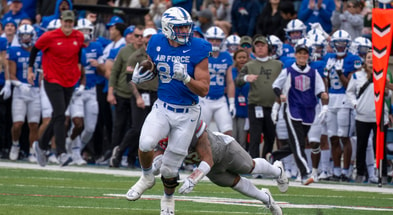
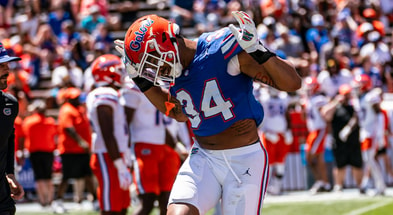
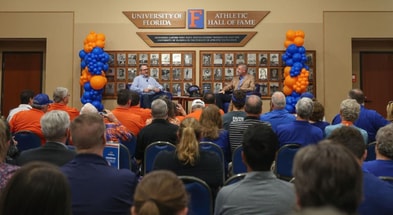

![Florida Gators head coach Billy Napier celebrates with Florida Gators wide receiver Aidan Mizell (11) after a touchdown during the first half at the Orange and Blue spring football game at Steve Spurrier Field at Ben Hill Griffin Stadium in Gainesville, FL on Saturday, April 13, 2024. [Matt Pendleton/Gainesville Sun]](https://on3static.com/cdn-cgi/image/height=215,width=393,quality=90,fit=cover,gravity=0.5x0.5/uploads/dev/assets/cms/2024/04/13155133/Untitled-design-65-2.png)
